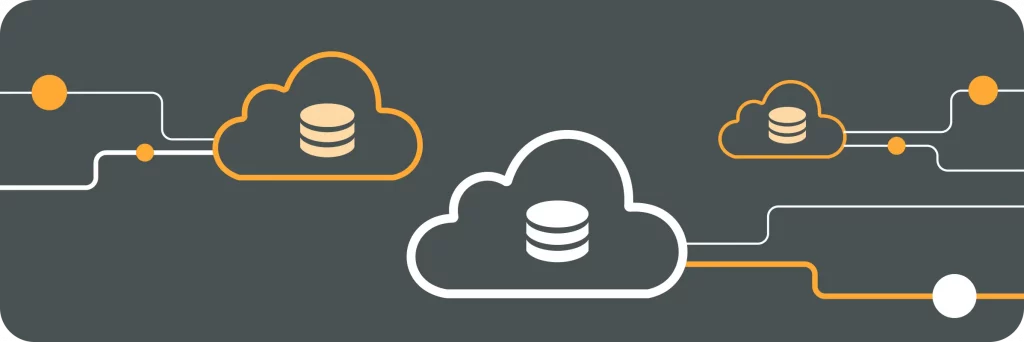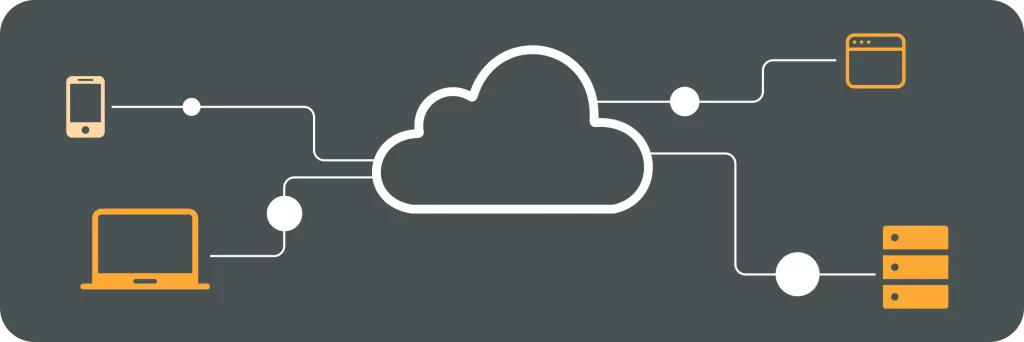In the world of DevOps, containerization has become an essential technology for packaging and deploying applications. One of the prominent container runtimes that gained immense popularity is containerd. Understanding the basics of containerd is crucial for any DevOps professional looking to leverage its capabilities effectively.
Understanding the Basics of containerd
What is containerd?
Containerd is an open-source runtime that provides a platform-agnostic environment for managing container lifecycle operations. It serves as a core building block in the container ecosystem, offering enhanced functionality and features for container runtime management.
When it comes to containerization, containerd is the backbone that ensures smooth and efficient operations. It acts as a reliable and scalable runtime, enabling developers to run containers securely and efficiently. With containerd, you can easily manage the lifecycle of containers, including starting, stopping, and deleting them, without worrying about the underlying infrastructure.
One of the key advantages of containerd is its compatibility with various container runtimes, making it a versatile choice for developers. Whether you’re using Docker, rkt, or any other container runtime, containerd provides a consistent and unified interface to manage your containers.
The Role of containerd in DevOps
In the DevOps landscape, containerd plays a vital role in enabling the efficient orchestration of containerized applications. It seamlessly integrates with popular container orchestration platforms like Kubernetes, allowing DevOps teams to effortlessly manage and scale their container workloads.
With containerd, DevOps teams can leverage the power of containerization to streamline their application deployment and management processes. By abstracting away the complexities of managing containers, containerd simplifies the task of deploying applications across different environments, whether it’s on-premises or in the cloud.
Moreover, containerd provides robust security features, ensuring that your containers are isolated and protected from potential threats. It offers fine-grained access controls, allowing you to define policies and permissions for different users and groups. This level of security is crucial in today’s fast-paced and interconnected world, where data breaches and cyber attacks are becoming increasingly common.
Furthermore, containerd’s seamless integration with container orchestration platforms like Kubernetes empowers DevOps teams to automate their container workflows. With containerd as the underlying runtime, Kubernetes can efficiently manage and schedule containers across a cluster of nodes, ensuring optimal resource utilization and high availability of applications.
In conclusion, containerd is not just a runtime for managing containers; it is a powerful tool that enables developers and DevOps teams to harness the full potential of containerization. With its versatility, scalability, and integration capabilities, containerd is a crucial component in the modern container ecosystem.
The Architecture of containerd
Containerd is a powerful container runtime environment that boasts a well-designed architecture comprising several core components. These components work harmoniously together to deliver a robust and efficient container runtime experience.
Core Components of containerd
Let’s dive into the core components that make up the foundation of containerd:
- Shim: The Shim component plays a critical role in container management. It is responsible for the seamless spawning and efficient management of containers on behalf of container runtimes. With its intelligent capabilities, the Shim ensures that containers are spawned and controlled with utmost precision and reliability.
- Snapshotter: The Snapshotter component is a true gem within the containerd architecture. It handles the creation and management of container snapshots, enabling lightning-fast and efficient distribution of container images. This powerful feature allows for seamless replication of containerized applications across different environments, saving valuable time and resources.
- Content Store: The Content Store is the backbone of containerd’s image management capabilities. It serves as a secure and efficient repository for storing and managing container images. DevOps teams can rely on the Content Store to facilitate quick and reliable distribution of container images across various environments, ensuring consistent and secure deployments.
- Execution Engine: The Execution Engine is a vital component that executes containerized applications using the chosen container runtime, such as runc. With its seamless integration, the Execution Engine ensures that containerized applications run smoothly and efficiently, providing a reliable foundation for running containers.
How containerd Works
Understanding how containerd operates is crucial to unlocking its full potential. Containerd follows a client-server model, where the containerd daemon acts as a server, providing a comprehensive set of APIs for container management. Container runtimes, including the ever-popular Docker, interact with the containerd daemon by making API calls to perform various container operations, such as creating, running, or stopping containers.
One of the standout features of containerd is its modular design, which allows for exceptional extensibility. DevOps teams can leverage this flexibility to tailor their container environments to meet their specific requirements. Whether it’s adding custom plugins or integrating with other tools, containerd empowers teams to build container ecosystems that align perfectly with their unique needs.
With its robust architecture and flexible design, containerd continues to be a go-to solution for managing containers at scale. Its core components work in harmony to provide a reliable and efficient container runtime environment, empowering DevOps teams to achieve their containerization goals with ease.
Benefits of Using containerd in DevOps
Efficiency and Speed
Containerd offers significant performance improvements by optimizing container lifecycle operations. Its lightweight nature and simplified architecture result in faster container startup times, reduced resource consumption, and improved overall efficiency.
When it comes to efficiency, containerd takes the lead. By streamlining container lifecycle operations, it eliminates unnecessary overhead and ensures that your containers are up and running in no time. This not only saves valuable time but also boosts productivity, allowing your DevOps team to focus on more critical tasks.
Moreover, containerd’s lightweight nature plays a crucial role in enhancing speed. With its minimalistic design, it minimizes the time required for container initialization, resulting in lightning-fast startup times. This means that your applications can be deployed and scaled quickly, enabling your organization to respond rapidly to changing business demands.
Scalability and Flexibility
With containerd, DevOps teams can effortlessly scale their containerized applications horizontally and vertically. It seamlessly integrates with container orchestration platforms like Kubernetes, allowing for seamless scaling and managing large-scale container deployments.
Scalability is a fundamental requirement for any DevOps environment, and containerd delivers on this front. Whether you need to scale your applications horizontally to handle increased traffic or vertically to accommodate resource-intensive workloads, containerd provides the necessary tools and capabilities.
Furthermore, the flexibility of containerd empowers DevOps teams to adapt their containerization workflows to fit their specific needs. It offers a wide range of configuration options, allowing you to fine-tune your container environment according to your requirements. This flexibility makes containerd an ideal choice for diverse DevOps environments, where different teams may have unique demands and preferences.
In conclusion, containerd not only brings efficiency and speed to your containerized applications but also provides the scalability and flexibility required in dynamic DevOps environments. By leveraging the power of containerd, your organization can optimize its container workflows and stay ahead in the fast-paced world of DevOps.
Setting Up containerd in Your DevOps Environment
Installation Process
Setting up containerd in your DevOps environment is a straightforward process. Begin by downloading and installing the containerd binary from the official containerd website. The website provides detailed installation instructions for various operating systems and container platform integrations.
Once installed, ensure containerd is configured correctly, verifying network settings, storage options, and any required customizations specific to your environment.
Configuration Tips
Containerd offers a range of configuration options to fine-tune its behavior according to your requirements. It is essential to review and adjust these settings based on factors like resource allocation, security measures, and optimized performance. Consult the official containerd documentation for detailed configuration best practices and recommendations.
When it comes to network settings, containerd provides flexibility in defining how containers communicate with each other and the outside world. You can configure network plugins to enable different networking options, such as bridged networking or overlay networking, depending on your specific use case. Additionally, containerd supports network namespaces, allowing you to isolate containers and control their network access.
Storage options are another crucial aspect to consider when setting up containerd. You can choose between different storage drivers, such as overlayfs, aufs, or zfs, depending on your requirements and the underlying file system. Each storage driver has its own advantages and considerations, so it’s important to evaluate them based on factors like performance, scalability, and data persistence.
Best Practices for Using containerd
Security Considerations
Security is a critical aspect of any DevOps environment. When utilizing containerd, it is crucial to implement strong security measures to safeguard your containerized applications. This includes regularly updating container runtimes, managing user permissions, and adopting secure container image practices.
Maintenance and Updates
Keeping containerd up to date with the latest releases and security patches is vital to ensure a stable and secure containerization environment. Regularly monitor containerd updates from the official sources, test them in a non-production environment, and schedule timely updates to minimize any potential disruptions to your DevOps workflow.
Stay on Top of containerd’s Evolving Ecosystem
As containerization technologies evolve, it is crucial for DevOps professionals to stay up to date with the latest trends and advancements in the field. Regularly engage with the containerd community, attend conferences, and participate in relevant forums to gain insights into containerd’s future developments and industry best practices.
Conclusion
Containerd has emerged as a powerful runtime in the DevOps ecosystem, offering container lifecycle management capabilities that enhance efficiency, scalability, and flexibility. By understanding the basics of containerd, leveraging its architecture, and adhering to best practices, DevOps professionals can unlock the true potential of containerization in their environments. Stay current with containerd’s evolving ecosystem and embrace the continuous improvements it brings to modern DevOps workflows.




